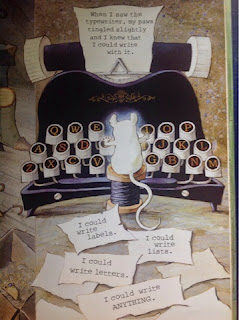My friend Mike Wohnoutka and his kids embarked on a Battle of the Books in March. Starting with 64 titles, they read and reread, voting books to the next bracket.
When Dinosaurs Came With Everything by Elise Broach almost made it to the Final Four, prevailing over
Don't Let the Pigeon Ride the Bus (Mo Willems) and
Monkey With a Tool Belt (Chris Monroe) before losing to
One Cool Friend (Toni Buzzeo). In the final round, Matthew McElligott's
The Lion's Share and Anne Mazer's
The Salamander Room faced each other for the title of winner. I love these books for different reasons, but what I especially like about both of them is their quiet nature.
The Salamander Room was voted the best book in the battle in the announcement this past moo day evening, so I pulled our copy from my oldest son's shelf to reread it yesterday. The words flowed from the page and my memory (having read it so many times to the boys). Brian's decision to take a salamander home to his room prompts a series of questions from his well-meaning mother. He must explain where it will sleep and play, how he will have company, what he will eat, where the other creatures (those that inevitably must join the salamander) will live, and how things will grow. I think the fascination for my sons were Brian's matter-of-fact answers and how when he spoke them aloud to his mother, they happened on the page in Steve Johnson's artwork. The boy's bedroom is transformed into a lush forest, just like the one the salamander inhabited a few pages ago. So the birds could fly, Brian's ceiling was lifted off. The trees could then grow tall through that open ceiling. Brian could sleep under the stars with all the lovely things he gathered for the salamander around him.
Though they never were basketball fans, my sons would have loved doing this with the books we love. Somehow, I want to expose the second graders to 64 picture books before March so we can have our own Battle of the Books during information literacy!








